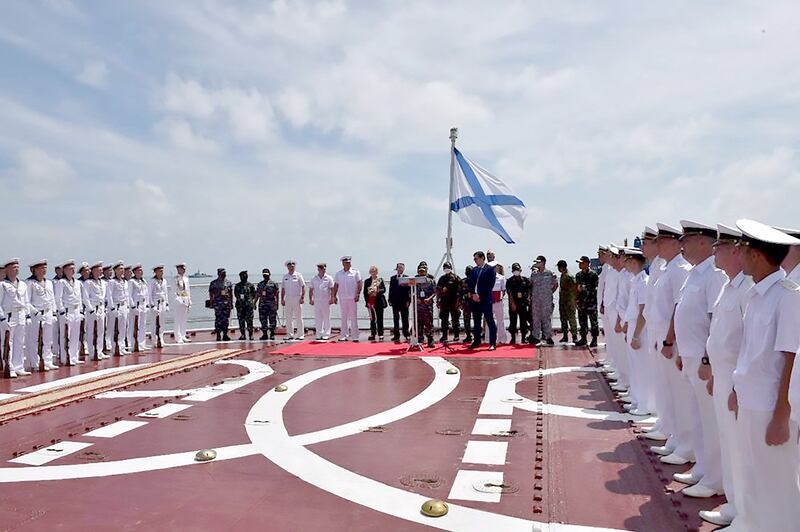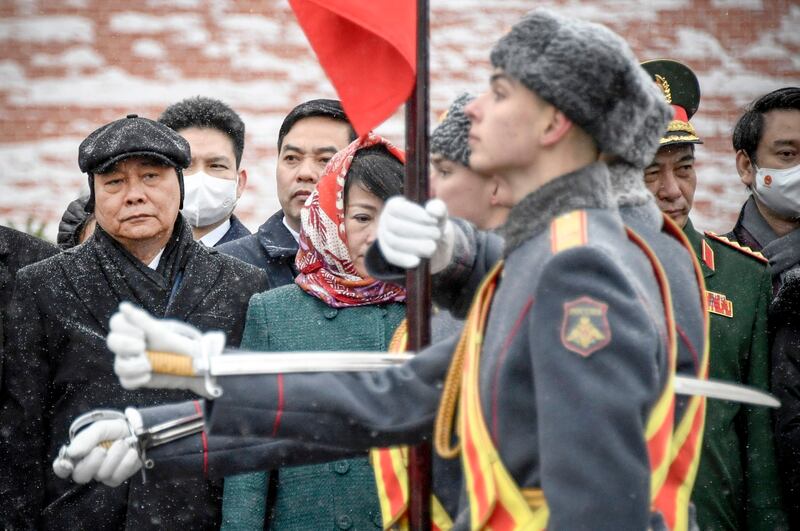Naval ships from Russia and countries in the Association of Southeast Asian Nations (ASEAN) are holding their first-ever joint exercise, signalling Moscow’s intent to engage the region though not heralding a major shift in its geopolitical strategy, analysts say.
The first ARNEX-21 joint exercise opened on Wednesday in Indonesian waters off North Sumatra and will last three days with participating navies from seven ASEAN countries including Myanmar. This year’s theme is "Joint Action to Ensure the Safety of Maritime Economic Activity and Civil Navigation," according to a statement by Indonesian Navy spokesman, First Adm. Julius Widjodjono.
“The 2021 ARNEX joint exercise is aimed at maintaining friendly relations between Indonesia, ASEAN countries and Russia and improving the professionalism of the navy servicemen of the participating countries,” Julius said in the statement, adding that the drills are “focused on maritime security cooperation, tactical cooperation between elements of surface ships and aircraft.”
Russia has sent the RFS Admiral Panteleyev, one of its Udaloy-class destroyers assigned to the Russia’s Pacific Fleet and a Ka-27 helicopter to take part in the drills. Both have anti-submarine capabilities.
“By holding its first naval exercise with ASEAN, Russia demonstrates that it has some skin in the game when it comes to the geopolitics of Southeast Asia,” said Artyom Lukin, an associate professor in political sciences from Russia’s Far Eastern Federal University in Vladivostok, where the Pacific Fleet is based.
“That said, the exercise itself is mostly symbolic, with Russia sending just one warship to participate. Russia's force projection capabilities in Southeast Asia are rather limited and cannot be compared to those of China, the U.S. or even Japan,” Lukin told RFA.

Boosting arms sales
“Military exercises are a way for countries to signal friendship and develop and improve interoperability but I wouldn’t look at this as demonstrating a big geostrategic shift,” said Olga Oliker, program director for Europe and Central Asia at the International Crisis Group.
“It does reflect Russia’s interest and engagement in the region, but that’s not really new: Russia has been emphasizing the Asian direction in its foreign policy for some time and developing ties with a number of Southeast Asian countries,” she added.
ASEAN and Russia celebrate the 30th anniversary of their relations this year and at the Russia-ASEAN summit held in late October Russian President Vladimir Putin said that "strengthening ties with ASEAN and its member states has always been and remains one of Russia's foreign policy priorities."
However, observers note that such statements are made almost every year and haven’t yet been followed up with substantial cooperation projects.
“These relationships (between Russia and ASEAN countries) tend to get overshadowed by that between Russia and China,” Crisis Group’s Oliker said, “but if you look, you’ll find a good bit of engagement, including fairly substantial weapons sales.”
Russia is the biggest arms supplier in Southeast Asia. Between 2000 and 2019 it sold $10.7 billion-worth of defense equipment, including to Vietnam and Malaysia, according to the Stockholm International Peace Research Institute. The United States, which is the region's second-biggest supplier, sold $7.9 billion, a third less. China sold $2.6 billion over the same period.
Russia has been selling tanks, warships, submarines, fighter jets and other weapons in the region. A year ago, it was revealed that an Indo-Russian joint venture was planning to export the BrahMos supersonic cruise missile to the Philippines and several other Southeast Asian countries.
The Russia-ASEAN naval drills, as well as other exercises with individual partners in Southeast Asia, should be seen as examples of Russia’s “military diplomacy” - using military means to achieve political, economic, and strategic objectives - said Andrew Korybko, a Moscow-based American political analyst.
“In this particular context, Russia hopes that its joint drills can serve to promote its naval and other wares that it expects to export more of to the region as it (the region) continues militarizing against a context of rising China-U.S. tensions and unresolved disputes over the South China Sea,” said Korybko.
“That would earn it more regional trust, likely boost other military exports, and thus serve as a means to explore the comprehensive improvement of bilateral ties,” he said, adding that Beijing seems to tolerate this practice since it might prefer for regional states to be supplied by Russia rather than the U.S.

“When water buffaloes fight…”
Amid the U.S.-China rivalry in the Indo-Pacific, it is in the Southeast Asian bloc’s interest to have a third, stabilizing power, argued Lukin from the Far Eastern Federal University.
“ASEAN countries are interested in drawing Russia in as it's ASEAN's long-established strategy to encourage external powers to become stakeholders in the region's security,” he said.
“Such a strategy allows ASEAN to multilateralize Southeast Asia's geopolitics and hedge against the potential threats coming from would-be hegemons.”
This way of thinking is evident in the foreign policies of some of the ASEAN member countries, such as Vietnam which has been performing a cautious balancing act for some time.
Russia is Vietnam’s traditional ally and one of its three comprehensive strategic partners, alongside China and India. The Vietnamese president Nguyen Xuan Phuc has just made a state visit to Moscow where he met with Putin and the two sides reaffirmed their “historical ties.”
“We don’t want to be seen as siding up with any power,” said a Hanoi-based defense analyst who wishes to stay anonymous as he’s affiliated with a state organization and not authorized to speak to foreign media.
“The Vietnamese have a saying: When water buffaloes fight, it’s the flies and mosquitoes that get squashed,” he added.
Vietnam is sending Ly Thai To (HQ-012), one of its Gepard-class frigates bought from Russia, to take part in the ARNEX-21. Indonesia, Singapore, Malaysia, Thailand, Myanmar and Brunei also send one warship each.
According to a statement from the host country Indonesia, the drills include a sea surveillance exercise, a maritime interdiction operation, a search and rescue exercise, and several non-combat maneuvers and communication exercises.

The at-sea phase will be carried out in Belawan waters extending to Sabang at the northern tip of Sumatra.
“The ARNEX appears to be more focused on security of navigation efforts rather than the naval military exercises Russia has conducted with India, Pakistan and China this year,” noted Mason Clark, lead Russia analyst at The Institute for the Study of War, a think tank.
“This is expected due to ASEAN’s less-military focus.”
“While these exercises are intended to expand Russia’s force projection capabilities and set conditions for later bilateral agreements with individual states, they are likely mutually supporting with Russia’s ongoing efforts to grow closer ties and expand naval cooperation with China,” Clark said.
Vasily Kashin, a Russian defense analyst, put it in a simpler way:
“I think that it is just logical that while we (Russia) hold so many exercises with China, we should also have similar activities with other Asian countries to have more balanced relationship in the region.”
He said the exercises would not pose a challenge to the U.S. position in the region nor draw objections from China.
